It’s silly really! We’ve been waiting, waiting, waiting for the shinkansen route to be completed to Kanazawa, which it finally was after our last visit here in 2011. Woo hoo, we thought, a lovely shinkansen ride to our favourite Japanese city. And then what did we do? We organised an itinerary that had us coming to Kanazawa via a non-shinkansen route. We had to do it that way because we needed to be in Kanazawa on a weekend and we didn’t want to be wasting time backtracking just to ride the shinkansen. Fortunately we get to leave Kanazawa on one.
But now, back to this morning. Before we left the hotel, I wanted to take a daylight photo of the restaurant we ate at last night. I did that, but in doing so, I noticed two polystyrene boxes outside the neighbouring (sushi, we think) restaurant. Of course I had to sticky-beak. One box had a lid, but the other was just covered in clear plastic, and what was under the plastic? One large headless fish, probably tuna. Yum. Only in Japan, surely, would you trust that such a fish would not be stolen.
Meanwhile, Len was waiting for me at the hotel, during which time breakfast service finished. This involved the three women standing in front at the buffet area, announcing breakfast was over, and then bowing. We didn’t mention how, during our Taiji, stay, we would see, as we drove into the hotel grounds, a staff member standing out front. As soon as she saw us appear, she’d start bowing. Did they have some trip wire telling them when people were driving up?!
Etiquette
Visitors to Japan worry quite a bit about Japanese etiquette, which is proper really. We should try to respect the customs of other countries, when we travel in them. But we shouldn’t get too hung up about infractions either. The Japanese are, on the whole, welcoming and polite to gaijin (even if later they have a big laugh in the back room, as occasionally they have been heard to do!) Don’t we all at times?
Anyhow, one piece of etiquette we are struggling with more this time around is eating everything on our plates. We never used the breakfast buffet in Taiji, because we had enough with the non-buffet food put on our table. We were fine at the yakitori restaurant last night, because you can just order small dishes as you go. However, at lunch yesterday in Yuasa historic district, we were both defeated by the huge mounds of rice in our meals. We never used to be like this. Is it our age? Or our colds? (Though mine is all but gone.) Anyhow, we will need to be more cognisant of our capacities we’ve realised.
The train
Travel took up the best part of the day. We left our Wakayama hotel around 9am and arrived at our Kanazawa one just before 3pm. Our trip involved one change, from a local, rattly and not overly comfortable train (a 90-mins ride) to a Limited Express Thunderbird (one step below the shinkansen) for 2 hrs 40 mIns. These trains have comfortable, reserved seats with good leg-room. For those who are interested, we are using a JR rail pass for the last fortnight of our trip. Anyhow, the train trip was uneventful. The conductor probably bowed as he entered and left the carriage (to check our tickets) but we weren’t watching.
Kanazawa, at last
Initially today’s forecast was for cloudy weather turning to rain, but it was a balmy 27°C when we arrived. There were clouds yes, but no sense of rain in the air. So, we decided to hightail it to our much loved Kenrokuen (garden) immediately. Kanazawa is not known as “this wet city” for nothing. It rained most of our last trip here.
Before heading out I picked up an English-language tourist paper, and was surprised to read that Kanazawa is “less glamorous than Nagoya, Fukuoka, or Sapporo, and lacks the star-studded appeal of Tokyo and Osaka”. But, it says, “for millions of people, this wet city on the centre of the west coast boasts the perfect combination of culture, cuisine, architecture, greenery and urban chic”. We don’t go in much for glamour or star-studdedness, but we do like the things that Kanazawa has to offer. It’s our kind of city.
Kenrokuen
Kenrokuen is regarded as one of the Three Great Gardens of Japan, the other two being Korakuen (in Okayama, which we saw last visit) and Kairakuen (in Mito which we’ll see this trip.) It is what the Japanese call a “strolling garden”. It was developed from the 1620s to the 1840s by the Maeda clan, initially as the castle’s outer garden. It has a complex history which you can read about in Wikipedia if you are interested.
Actually Japanese gardens have a long, long history as Japan Guide (another excellent site for tourists to Japan) describes clearly. Strolling gardens, as they say, were developed in the Edo period. Another famous one is Ritsurin-koen in Takematsu, which we also saw last visit. (A non-strolling garden is the modern Adachi Garden near Matsue, which we visited last trip.)
Of these gardens, Kenrokuen is the one we know best. After today, we have now seen it four times (this time free because we are both seniors!) It is large and has so many points of interest, which include:
- Japan’s oldest fountain, operating by natural water pressure, and dating I believe to the mid 1800s.
- Yūgao-tei, a teahouse which is the oldest building in the garden, built in 1774. It demonstrates the aesthetic principle of wabi-sabi, a complex concept relating to acceptance of the idea of transience and imperfection. It is characterised by things like asymmetry, roughness, simplicity …
- Karasakinomatsu Pine, planted by the 13th lord Nariyasu who got the seed from Karasaki, near Lake Biwa (a big lake we passed in the train today.) This pine is huge and spreading, with many of its branches propped and supported by wood logs.
- Kotoji-tōrō stone lantern near Nijibashi bridge. It is one of those must-do tourist shots: you pose on the bridge with the lantern behind you.
- Gankō-bashi or Flying Geese Bridge, made of eleven red stones laid out to resemble geese in a flying formation. I love this bridge but we haven’t been able to walk over it for some time. I’m pretty sure we did our first visit.
- Kaisekito Pagoda, in Hisagoike Pond, said to have been donated to the Maeda by Toyotomi Hideyosh
Then, of course there are the multitudes of trees, shrubs, and flowers. Some of my favourites, besides the pines, are their banks of azaleas (not flowering now of course), areas of mondo grass ground cover, and the irises in the streams. I also love coming across little individual stone lanterns all over the gardens, as you’ll see in the slideshow!
Oh, and especially for Lisa. Kenrokuen has many water features, and thus many bridges, of which there is not a red one among them. Most are stone, but some are wood – and I’ve included a few in the slideshow!
And some Stills…
And some Movies…
Click here to view today’s video clips
Today’s Challenges …
- locating the right part of the platform to stand on for the right carriage on the train. It’s precision stuff here.
- finding somewhere simple for dinner and ending up at a sort of Vietnamese/Indonesian/Thai place which seemed to serve a fried egg with everything, whether it be Nasi Goreng or Thai Stirfried Chicken with Basil. They did make a perfectly refreshing white wine spritzer with lemon, though, which was just right with spicy food.









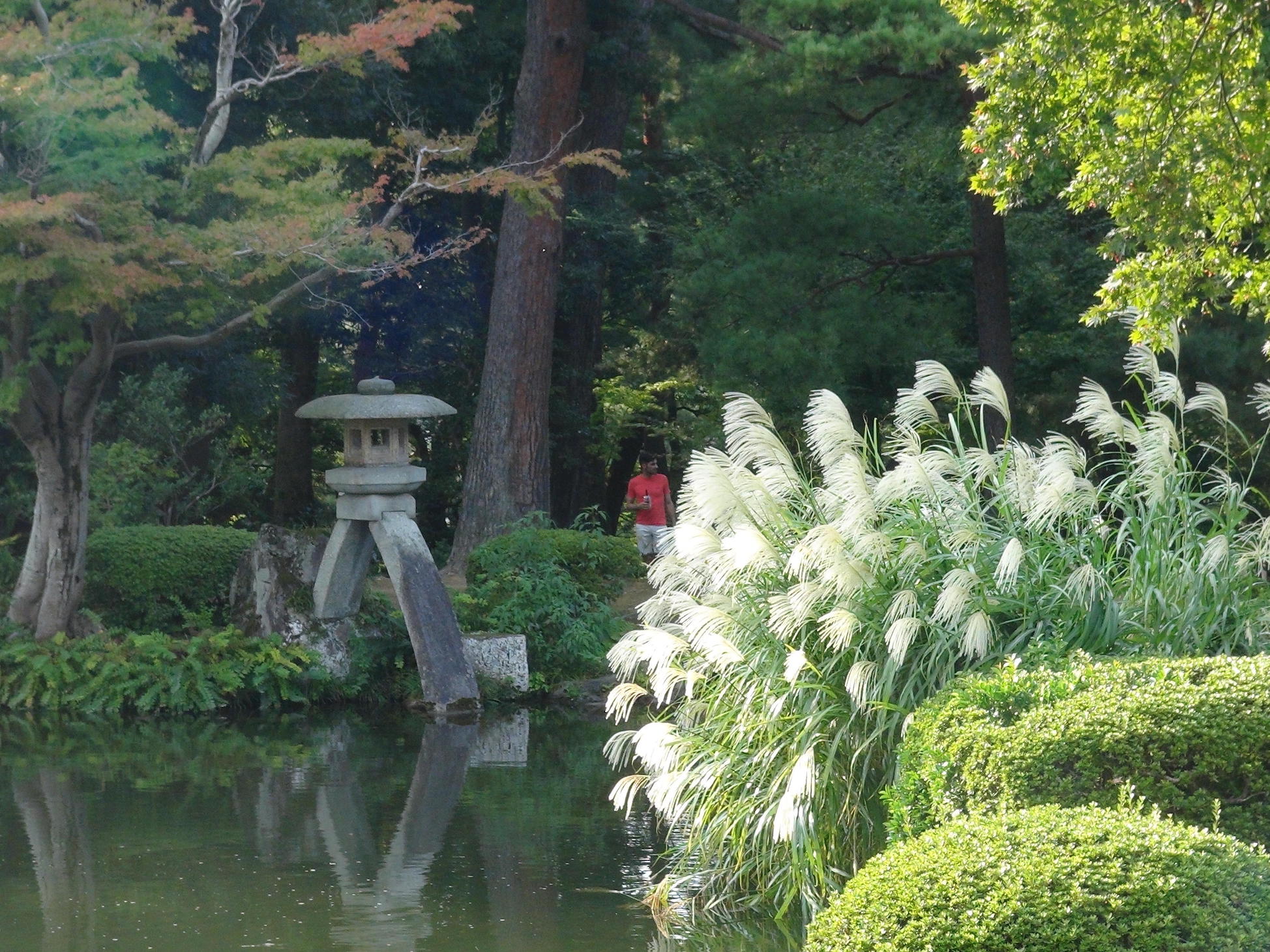
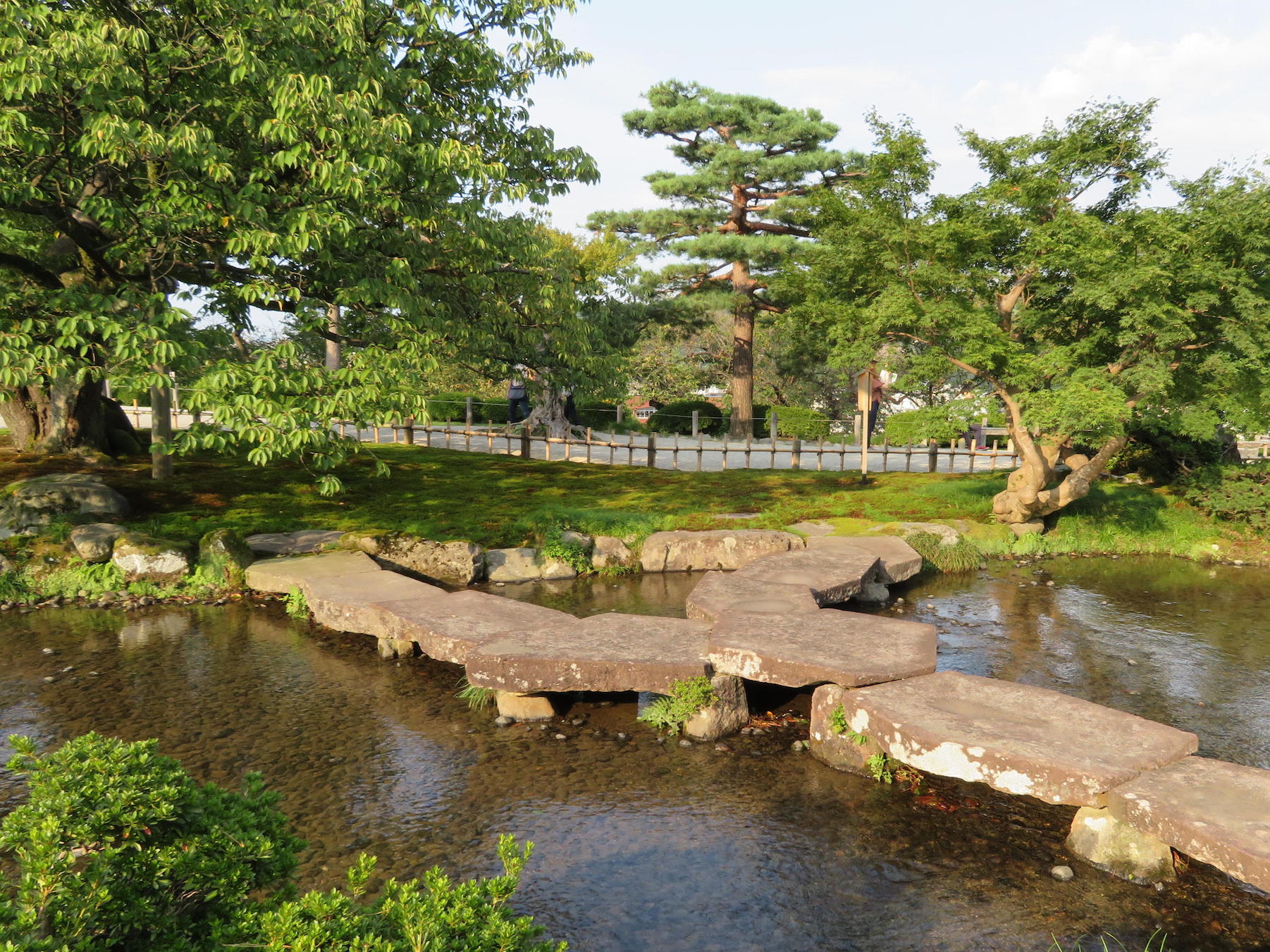


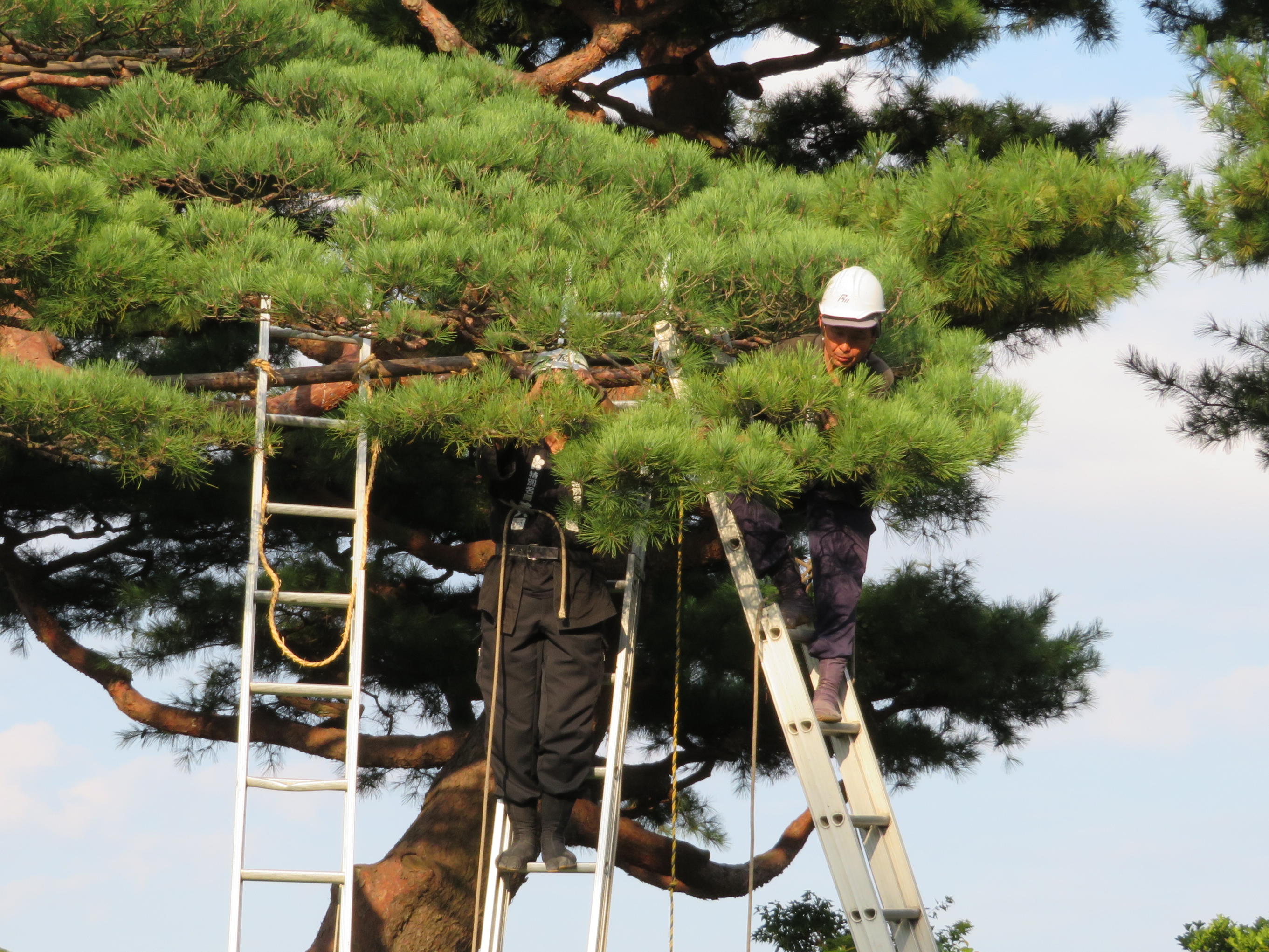
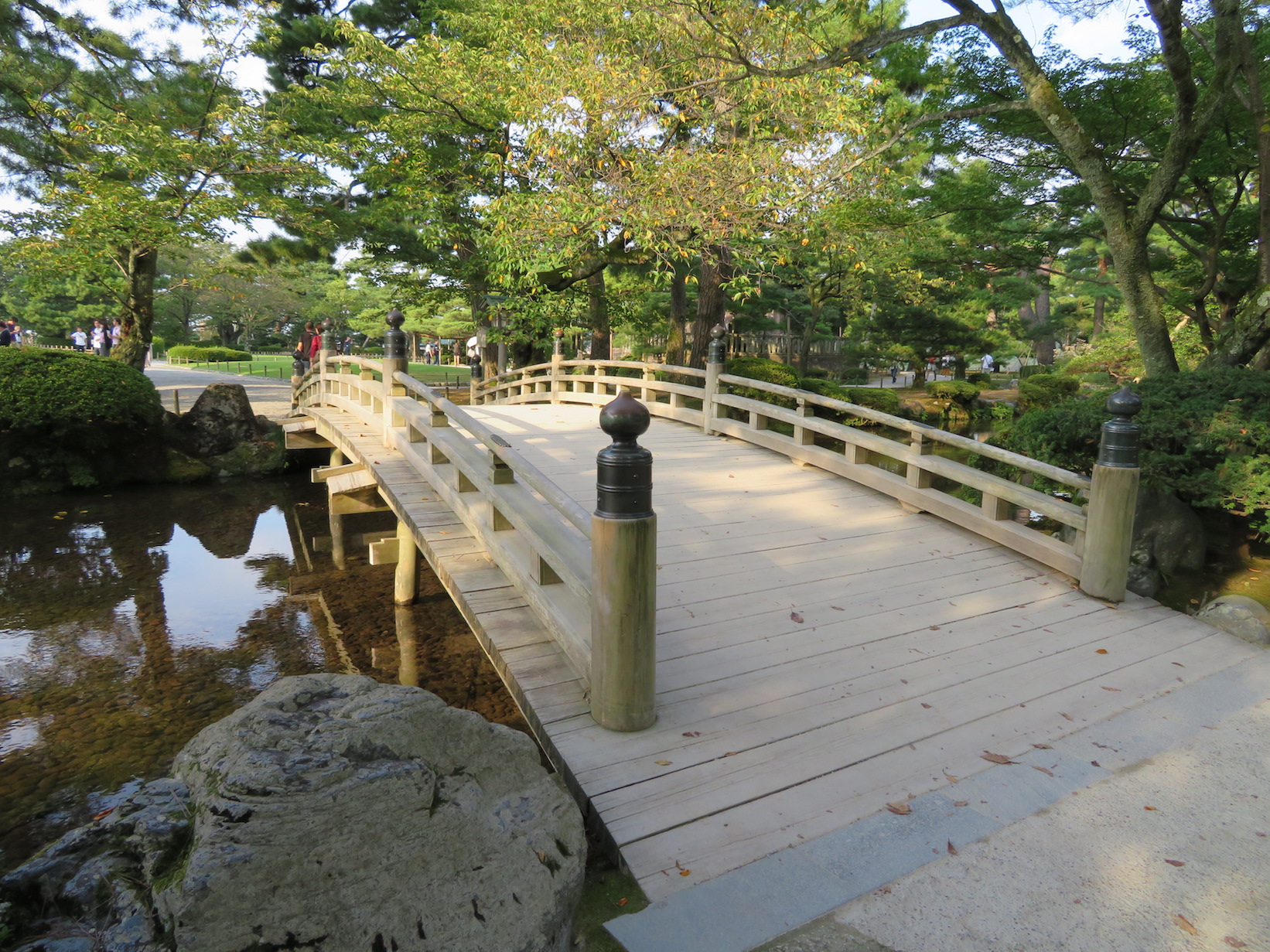

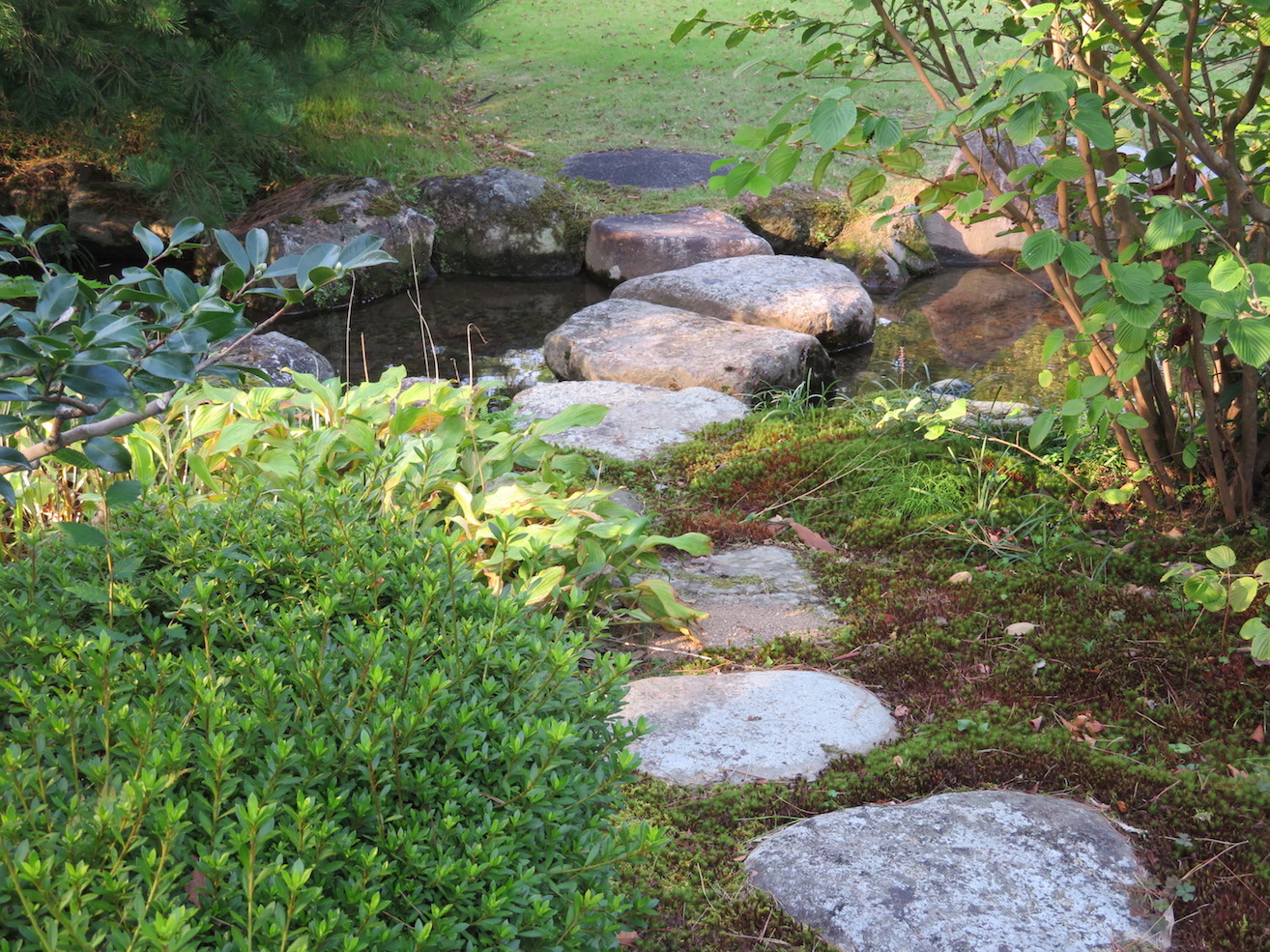

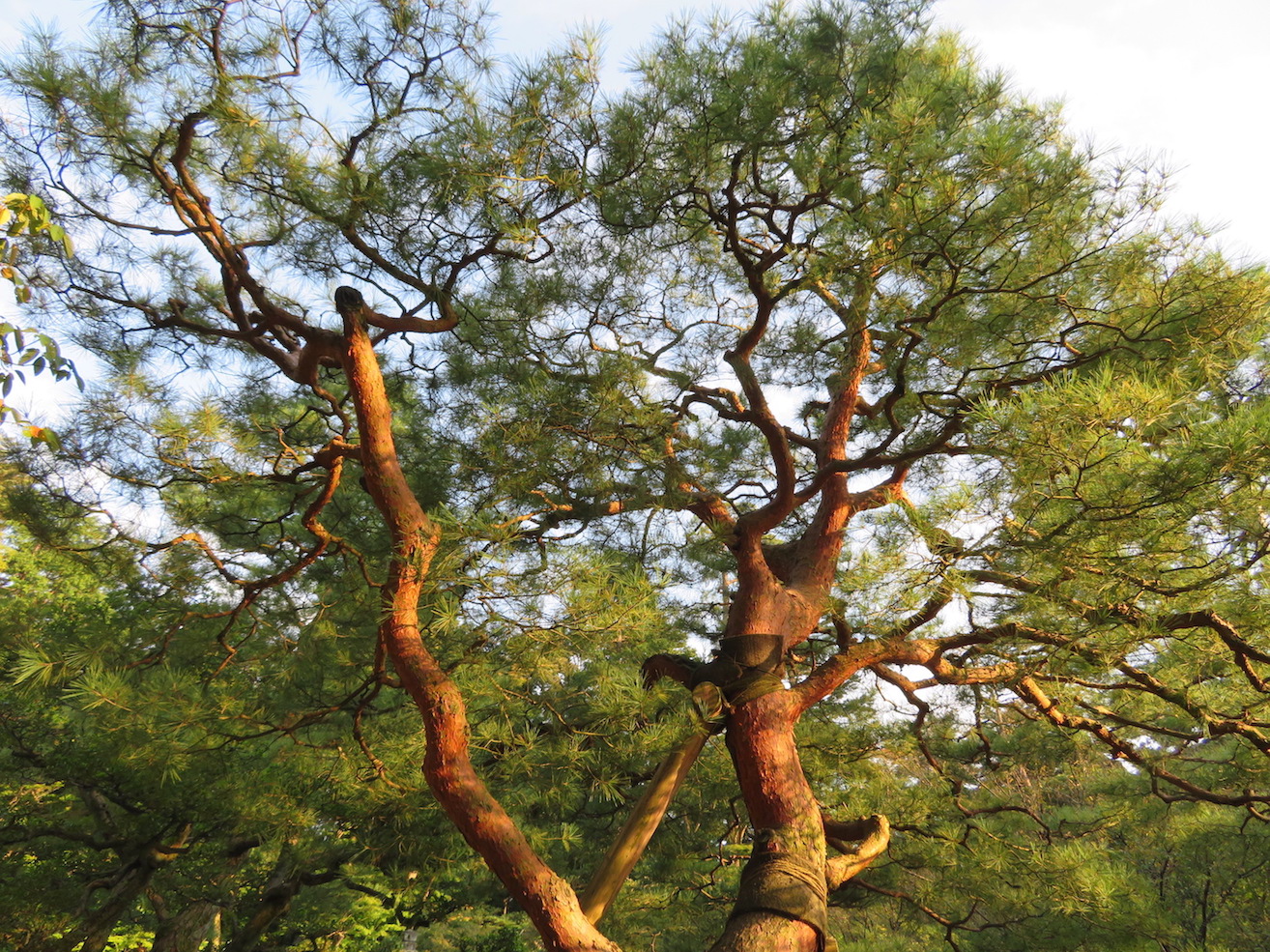
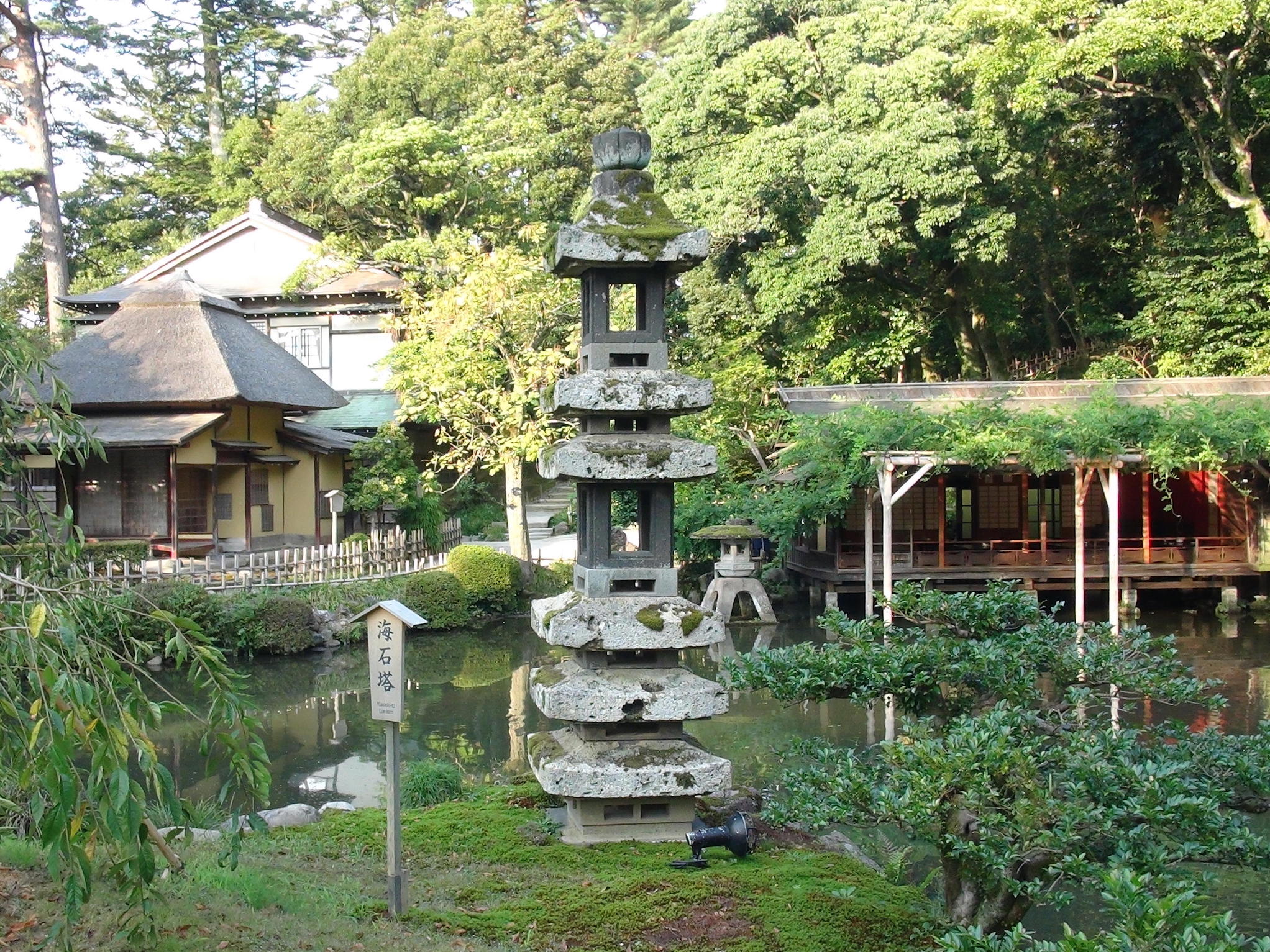
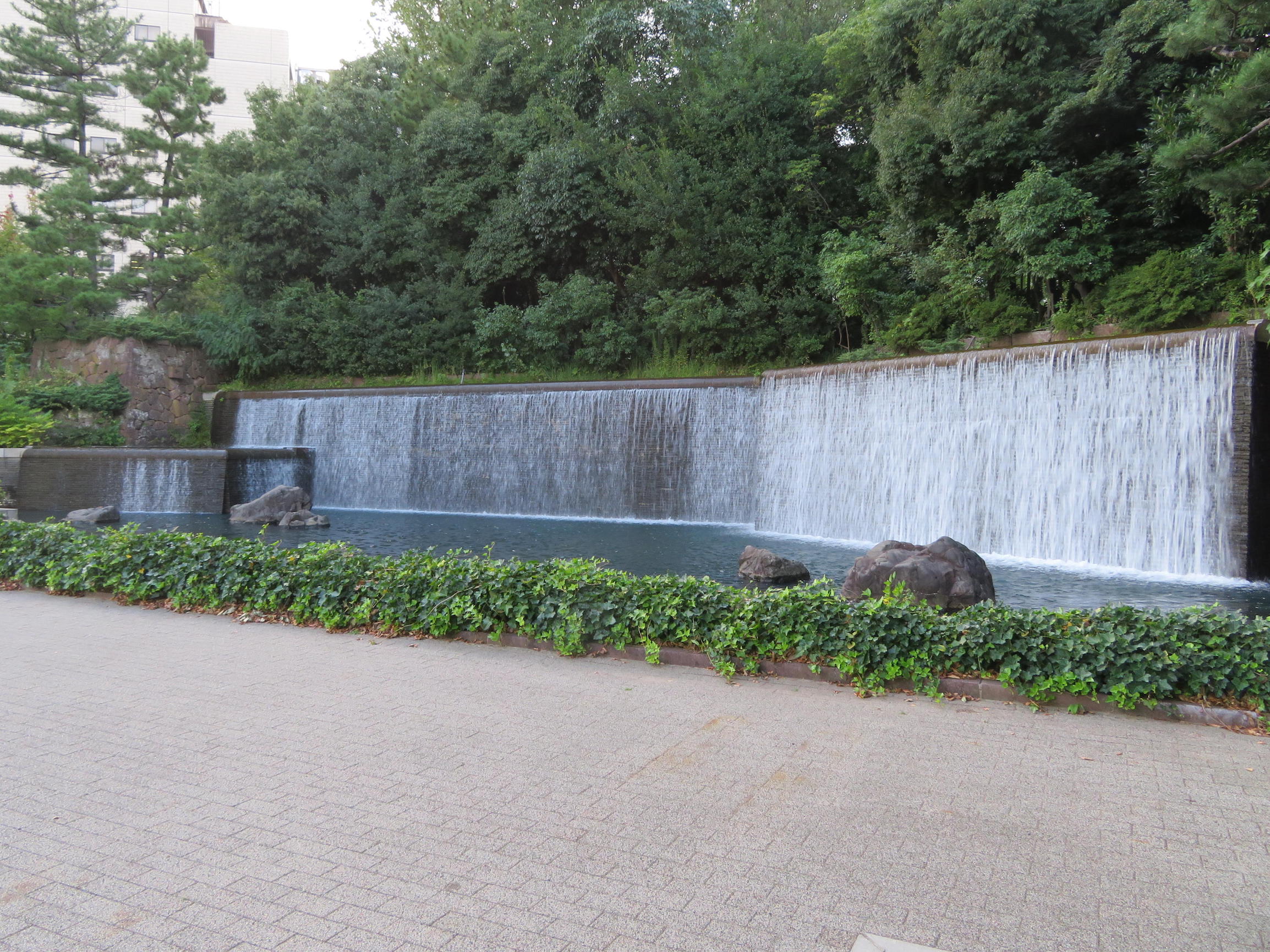
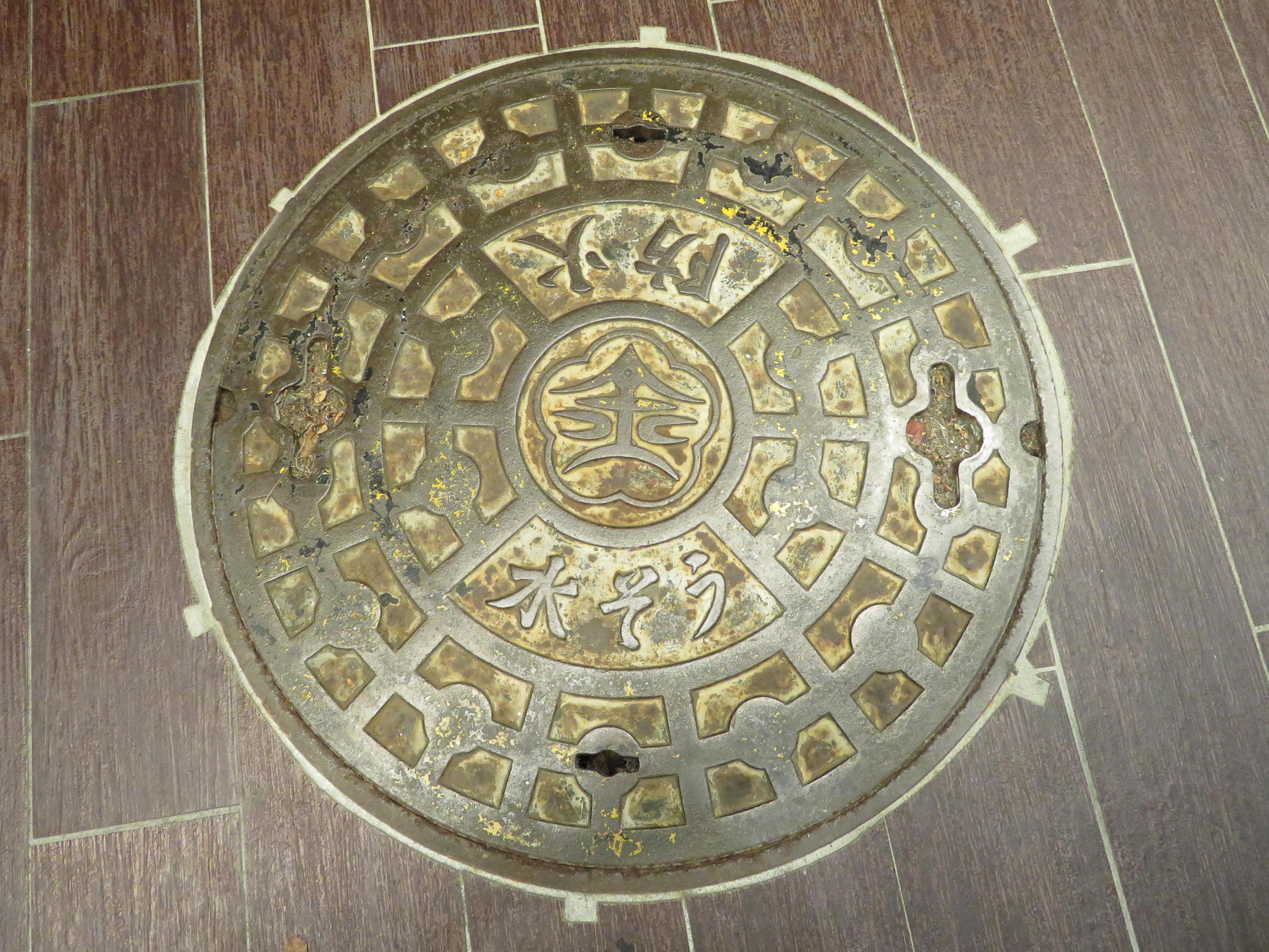
That bento!!!! Gosh I love Kanazawa xx
Good bento, eh, Hannah?
And yes, Kanazawa is a great place.
“Pardon me, boy …” (I hope you had your fare and just a trifle to spare, you guys …)
About that fish outside the resto: I’m always bemused that bakers here leave boxes of YUMMY-looking rolls outside Italian ristos every morning. (Also sorely tempted !)
Why haven’t you been able to cross the Flying Geese Bridge ?
The footage of how to make your own shinkansen … have you seen the YouTube footage of the incredible machines that build railway bridges ? – but I’ve just realised that they’d be unworkable in Japan owing to their weight. 🙁 Yer an idiot, M-R.
Truly glorious gardens !
Ha ha M-R, luckily we did have our fore and some spare!
The Flying Geese bridge has been blocked off for some reason M-R.
We love Kenrokuen. The water, the stones, the trees.
Hmmm, the Ekiben looked like a much better option than my pumpkin gnocchi on train up here on Wednesday.
Haha Ian, that probably wouldn’t be hard – and of course, the ekibn is much more suitable for my diet.
I hope strolling gardens have places to just sit and enjoy. Lanterns seem to pop up everywhere— are they working lanterns or just left from bygone ages? Are the gardens open at all at night, ie what time do they close? Lovely pics – everything looks so calm and peaceful.
Glad to hear your cold has just about gone, Sue – hope Len’s follows suit quickly.
Yes they have some places to sit, Mum. But no, not open at night . Close at 6 in warm months and 5 in cold months. Never seen a lantern used.
That was a Beautiful ekiben! I agree with you that they serve big portions of standard favorites like oyakodonburi and tempura udon. It seems that Western foods such as spaghetti or sandwiches tend to come in smaller portions. The breakfast buffets are delicious but I agree that a buffet and lunch are too much. As for the sights, I love your Kenrakuen pictures and comments about wabi and sabi. Wish I were there!
Thanks Carolyn. An Australian friend said that you can lose weight in Japan! I’m not so sure about that. You have to make a concentrated effort to avoid rice. Then again, there aren’t many big Japanese people, so they seem to manage it.
Ah, good to see those bridge pictures!
Maybe there just always red here in Australia, LOL some health and safety idea!
The Spouse has been to Japan: he loves their trains!
Ha ha Lisa. Maybe. I’ve been thinking about it. I think the red is pretty common in shrine and temple gardens, and is symbolic, but not in these landscape or strolling gardens where naturalism and subtlety seem to be more the go. Your question made me think!
Yes, red does not fit in with the Wabi and Sabi idea of faded elegance and lonely austere beauty, so I’m pretty sure you won’t see red in those Zen-inspired gardens.
Thanks Carolyn for that clarification.
There is absolutely no way that I can lose weight in Japan because there are just too many yummy foods everywhere. The availability of freshly baked bread is something you cannot find in SoCal. I’d have to walk up and down a lot of those mountains to burn off the goodies.
Thanks Carolyn, that’s sort of our feeling too. So hard to resist!